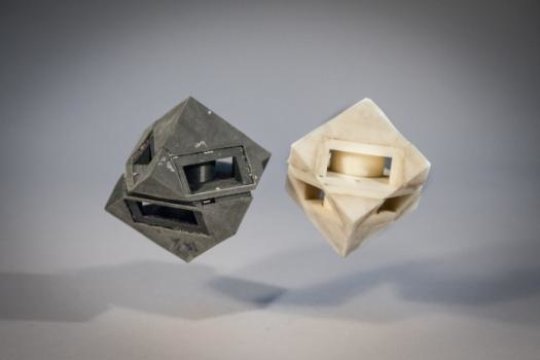
Anyone who’s watched drone videos or an episode of “BattleBots” knows that robots can break — and often it’s because they don’t have the proper padding to protect themselves.
But this week researchers at MIT’s Computer Science and Artificial Intelligence Laboratory (CSAIL) will present a new method for 3-D printing soft materials that make robots safer and more precise in their movements — and that could be used to improve the durability of drones, phones, shoes, helmets, and more.
The team’s “programmable viscoelastic material” (PVM) technique allows users to program every single part of a 3D-printed object to the exact levels of stiffness and elasticity they want, depending on the task they need for it.
For example, after 3-D printing a cube robot that moves by bouncing, the researchers outfitted it with shock-absorbing “skins” that use only 1/250 the amount of energy it transfers to the ground.
“That reduction makes all the difference for preventing a rotor from breaking off of a drone or a sensor from cracking when it hits the floor,” says CSAIL Director Daniela Rus, who oversaw the project and co-wrote a related paper. “These materials allow us to 3-D print robots with visco-elastic properties that can be inputted by the user at print-time as part of the fabrication process.”
Source: 3-D-printed robots with shock-absorbing skins — ScienceDaily


